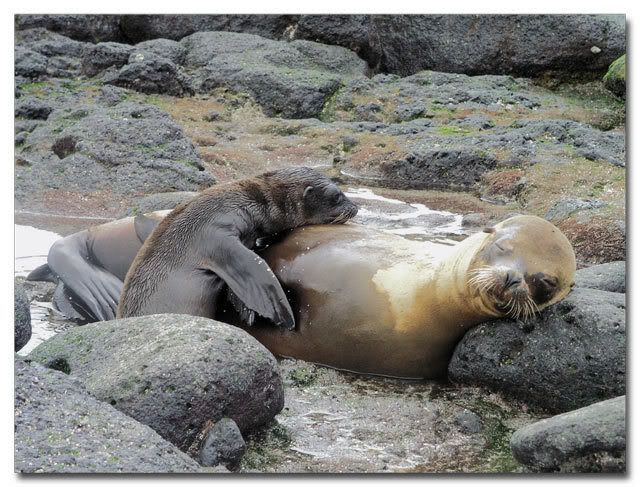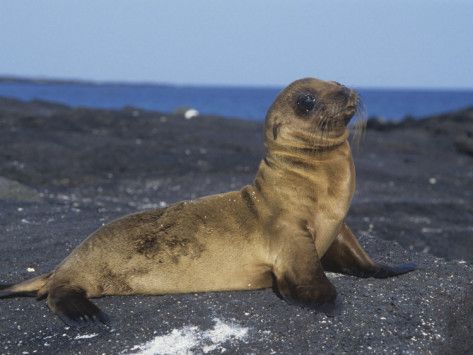We have our many species of fish and our colorful corals down to a science but there is one marine mammal that we rarely meet up with.
Characterized by long foreflippers, external ear flaps, short thick hair and a yelp that is tough to duplicate, the sea lions slide from rock to rock sunning themselves and swimming in and out of the ocean in an attempt to search for their next meal as well as frolicking for fun.
Most recently, on the California coastline, a large number of sea lion pups have been discovered in failing health. They appear to be dehydrated and malnourished to the point that you can see their spines. Optimum weight is around 65 pounds but they are only holding at 20 to 30 pounds. It has been a mystery to marine biologists who have been trying diligently to determine the cause.
The Pacific Marine Mammal Center has declared a state of emergency. This caring non-profit organization is dedicated to the rescue, rehabilitation and release of marine mammals that find themselves stranded along the Orange County coastline. With their extensive amount of research and education, word is spreading which in turn builds more public awareness. But now they working round the clock to treat over 300 sick pups.
From the beginning of this year, it is now estimated that over 1400 young California sea lions have been admitted to centers similar to the Pacific Marine Mammal Center. This epidemic seems to only be affecting the young sea lions.
In an effort to get to the bottom of the issue and combat the problem, NOAA has gone to extraordinary measures by declaring the situation an “unusual mortality event”. By taking these drastic steps, additional funding is allocated for further research and rehabilitation. At this time, over 25% of the seals have died that have been brought in for treatment. That is a staggering percentage.
The cause could be as simple as not being able to dive deep enough to get a substantial meal at such a young age or as complex as a food shortage, exposure to bio-toxins, disease and human pollutants. Although it may seem difficult to believe, the 2011 tsunami may have caused Japan’s Fukushima nuclear power plant meltdown which is just now affecting the California coastline.
NOAA is continuing to work closely with oceanographers and fishery scientists to try to get to the root cause. The birthing season for these adorable pups takes place in June so time is of the essence. We cannot afford to lose more of these mammals.
Currently, once the pups are nursed back to health, they have been tagged with a tiny monitoring device that tracks them as they are released back to their recognized water habitat searching for any deviation from the normal routine.
Experts from the Marine Mammal Center have said that a report on the sea lion stranding is expected to be released by NOAA some time next year. It has been estimated that approximately 150 sea lions have been released back into the wild which is great news.
Here are some suggestions that concerned citizens can take according to the Pacific Marine Mammal Center:
1. Do not approach the animal. Keep a distance of at least 50 yards from the animal.
2. Call Pacific Marine Mammal Center at 949-494-3050 to report the exact description and location of the animal.
3. Keep others from approaching the animal.
4. Do not attempt to push or encourage the animal back into the ocean, pour water on the animal or feed the animal.
5. Make a donation. The Pacific Marine Mammal Center is non-profit and depends entirely on public support to respond and care for the county’s marine mammals. You can visit their website, www.pacificmmc.org or call them at 949-494-3050 to pledge your support.



